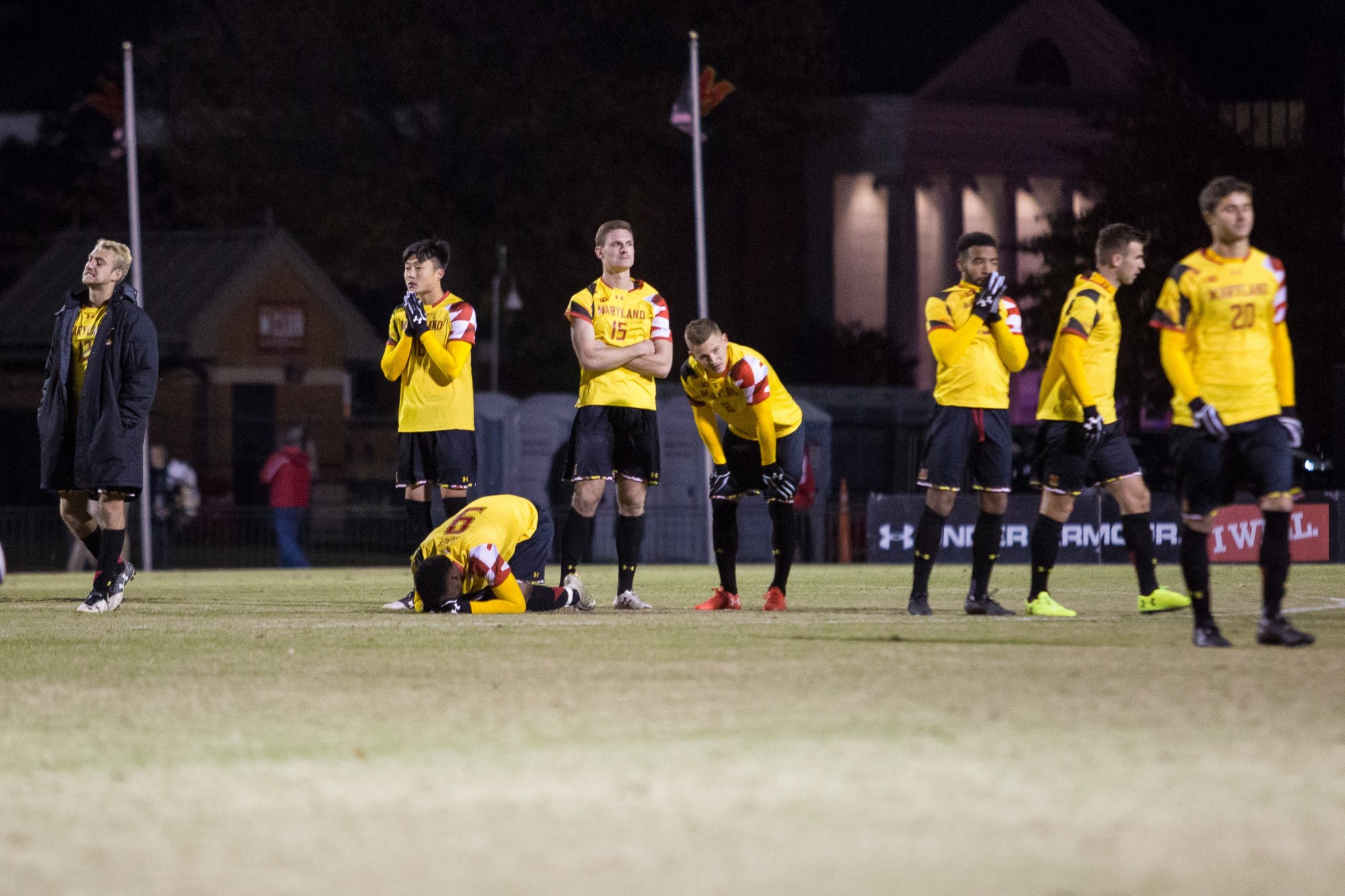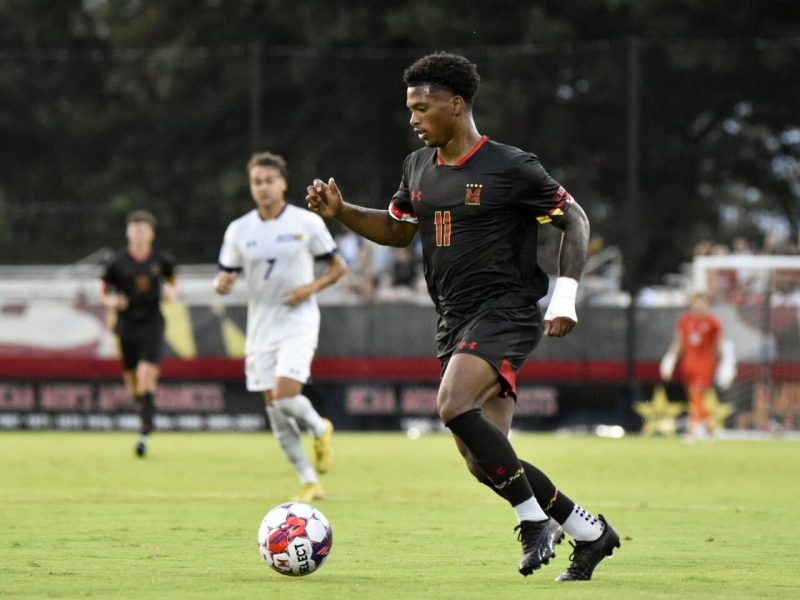It wasn’t immediately evident, but the Maryland men’s soccer team that flew back to College Park after beating Wisconsin on Oct. 13 was not the same team that had arrived in Madison, Wisconsin, undefeated, atop the Big Ten standings and ranked No. 3 in the country.
That team returned home and lost five consecutive games at Ludwig Field, crashing out of the Big Ten tournament as the No. 4-seed and dropping into the bottom half of the NCAA tournament field.
After returning most of a team that went undefeated in the 2016 regular season but suffered a stunning defeat in its first NCAA tournament game to Providence, the Terps entered 2017 with national title expectations. That seemed an attainable goal until — seemingly out of nowhere — it became clear reaching the second round would be a challenge.
Maryland welcomed Albany in the first round and was the same toothless squad it had been for nearly a month, playing to a scoreless draw before losing in an eight-round penalty shootout to end a season that had turned on a dime.
“For the last five games, our quality in finishing just dried up,” coach Sasho Cirovski said. “I don’t have an explanation for it.”
[Read more: Maryland men’s soccer couldn’t solve its offensive issues in the NCAA tournament]
Indeed, nobody on the team seemed to know why its attack — which was supposed to be its strength — struggled throughout the year and vanished in the final month.
Maryland, which returned all starting forwards and attacking midfielders from the nation’s second-ranked scoring offense in 2016, had the 57th-best attack in 2017. The Terps did not score off a corner kick the entire season.
After a five-goal performance against Wisconsin, the second and final time Maryland scored more than three times in a game all year, the attack mustered just two goals in the final six games.
Forward Gordon Wild, who finished as one of the nation’s top two scorers his first two college years, scored five goals all season and none in the final 13 games.
Midfielder Eryk Williamson led the team with six goals, half of which came via his hat trick in Madison.
“We always talk about making it look pretty,” Williamson said, “but at the end of the day, it’s just — the ball’s not getting in the net. That was our biggest problem.”
[Read more: Maryland men’s soccer suffers an early NCAA tournament exit for the second straight season]
Meanwhile, an unknown backline carried the team through some of its early games, when Maryland’s offense showed signs of the struggles that were to come.
Cirovski used four defenders and a goalkeeper who were never previously starters at those positions for Maryland. Defenders Donovan Pines and Johannes Bergmann shined as sophomores in front of another sophomore, Dayne St. Clair, in net.
“We take pride in no shots,” right back George Campbell said after an early-season 2-0 win over Hofstra. “We take pride in no goals. This is a good reflection of the growth that we have and the potential that we have for this year.”
Campbell, a converted midfielder, helped the Terps backline keep eight clean sheets in the first 13 games.
But left back Chase Gasper re-injured his left groin against Wisconsin and the makeshift defenses Cirovski played in the next five games, all of which were losses, proved much more porous, as the Terps surrendered nearly two goals per game.
Losing in the Big Ten tournament quarterfinals gave the Terps a 10-day break before the NCAA tournament. Gasper was healthy after that layoff, and his return, along with what Maryland said were its best training sessions of the year, gave the Terps hope they could avenge last season’s NCAA tournament loss with an improbable run.
“Through that adversity, there’s been an opportunity to really reset and get stronger,” Cirovski said entering the tournament. “It’s been a long time since we had a little bit of a chip on our shoulder. … There’s a few people who have written us off, and that’s at their own peril.”
Instead, the backslide continued. Gasper shored up the backline, which was rarely challenged by the Great Danes. But despite controlling possession, the Terps hardly threatened Albany.
Fittingly, the Terps struggled in the penalty shootout that ended their season and ensured the unbelievable collapse wouldn’t be revived. Maryland converted just four of eight penalties, missing the target twice and requiring one impressive save from Albany goalkeeper Danny Vitiello, spoiling a pair of stops from St. Clair.
“It’s hard to understand,” Cirovski said. “That’s not the skillset of our players.”



